Hello! This is part seven of a multi-part series on the Inca Empire and the Conquistadors. If you want some background, the introduction to this series is right here, and part six is here. Or I mean, jump right in and be horribly confused, your call.
However, for all their wealth and power, not all was well with the Spanish.
The feud between Almagro and the Pizarros had reached boiling point by then, with each side able to easily identify slights the other had inflicted on them. Almagristas noted that Pizarro had initially given Almagro only the governorship of Tumbez, while holding the rest of the governorship of Peru to himself. Supporters of Pizarro argued they had entered first and faced the greatest danger, while Almagro had come later and thus deserved to receive less.
With so much gold and a literal empire at stake, it’s easy to see why this feud continued to escalate.
Tempers rose to the point that Juan Pizarro, incensed by an insult from Hernando de Soto, an Almagrista, fought with him barehanded in the street, then returned to his house to get his horse and lance. In broad daylight in Cuzco, Juan charged Hernando de Soto, nearly killing the man. De Soto only survived by escaping into a friend’s house while Juan’s friends dragged their enraged leader away.
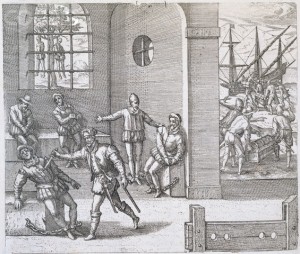
Eventually a compromise was hammered out between Pizarro and Almagro, despite Pizarro’s hotheaded brothers and Almagro’s more bloodthirsty captains. Almagro would leave on an expedition to the south with his supporters and whoever wished to accompany him. Large stretches of the Inca Empire, including a large part of modern-day Chile, had not been conquered by the Spaniards yet. Ideally, Almagro would discover another large, wealthy state to overthrow. Then he could have his governorship, and his men would have all the gold and luxury they could possibly desire. It was a good compromise, and both Pizarro and Almagro must have been happy that they had averted any serious violence.
In 1535, Almagro left for Chile with 500 men and thousands of native warriors, headed by Manco Inca’s brother Paullu. There must have been a relaxing air in Cuzco after Almagro left, as essentially a rival gang had left Pizarro’s territory.
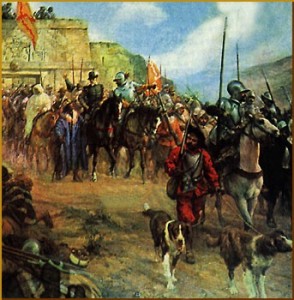
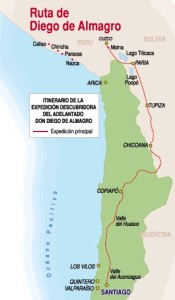
Shortly before Almagro’s departure Pizarro headed west to the coast of Peru. Cuzco was an excellent city, but it was too far from the ocean for Spain’s navy to reliably bring reinforcements. Pizarro founded a new city, Ciudad de Los Reyes or “City of the Kings,” (Modern-day Lima) on Peru’s coast. The new city began to spring up, a perfect port for the Spanish to connect overseas with the rest of their empire.

Hernando de Soto left as well, but he didn’t go with Almagro. Instead he returned to Spain before eventually leading an expedition back across the ocean to Florida, seeking another wealthy empire to conquer. de Soto never found an empire in Florida, and during his expedition he would eventually cross the Mississippi river, becoming the first European to do so, before dying of a fever.
As Almagro’s army rode off into the distance, both Pizarro and Almagro were able to congratulate themselves. They had avoided violence over the empire, for the time at least.
Dates
c. 1200 Kingdom of Cuzco is founded
1438-1471 Reign of Pachachuti
1471-1493 Reign of Tupac Inca
1492 Columbus discovers the Americas
1493-1527 Reign of Huayna Capac
1526 Pizarro and his thirteen men discover the Inca city of Tumbez
1527 Huayna Capac dies of smallpox brought by the Europeans
1527-1531 Civil war between Atahualpa Inca and Huascar
1531 Pizarro’s conquering expedition to Peru, Pizarro captures Atahualpa Inca, Atahualpa executes his brother Huascar
1533 Pizarro executes Atahualpa Inca and installs Manco Inca as the new Inca
1535 Pizarro founds the city of Lima
Characters
Incas
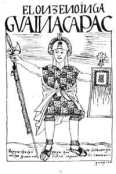
Huayna Capac – Emperor of the Incas [Died of plague in 1527]
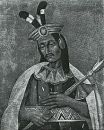
Huascar – Son of Huayna Capac and the heir to the throne [Executed by Atahualpa in 1531]

Atahualpa – Brother of Huascar and rival for the throne, emperor of the Incas [Executed by Pizarro in 1533]
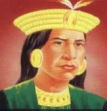 Manco Inca – Younger brother of Atahualpa and Huascar, emperor of the Incas
Manco Inca – Younger brother of Atahualpa and Huascar, emperor of the Incas
The Pizarros
 Francisco Pizarro – Oldest of the brothers and mastermind of the expedition. A talented leader of men and a good strategist
Francisco Pizarro – Oldest of the brothers and mastermind of the expedition. A talented leader of men and a good strategist
Hernando Pizarro – Second of the brothers; a canny and calculating tactician [Returned to Spain to send the king his share of the treasure in 1533]
Gonzalo Pizarro – Third brother; charming womanizer with a vicious cruel streak
Juan Pizarro – Youngest of the brothers and a powerful, impetuous soldier
Almagristas
 Diego Almagro – Partner with Pizarro and one of his oldest friends, a hardened veteran of many battles ready to strike it rich [Leaves Peru to conquer Chile in 1535]
Diego Almagro – Partner with Pizarro and one of his oldest friends, a hardened veteran of many battles ready to strike it rich [Leaves Peru to conquer Chile in 1535]
Diego Almagro II – Almagro’s son, a hot-headed young soldier [Accompanies his father to conquer Chile in 1535]
Royalists
 Cristobal Vaca de Castro – Viceroy of Peru, a flexible and adaptable man
Cristobal Vaca de Castro – Viceroy of Peru, a flexible and adaptable man
 Blasco Nunez Vela – Viceroy of Peru, grating and brusque administrator
Blasco Nunez Vela – Viceroy of Peru, grating and brusque administrator
 Pedro de la Gasca – Viceroy of Peru, a clever politician and adept manipulator
Pedro de la Gasca – Viceroy of Peru, a clever politician and adept manipulator
One thought on “Chapter 7: Brothers in Blood and Brothers in Arms”